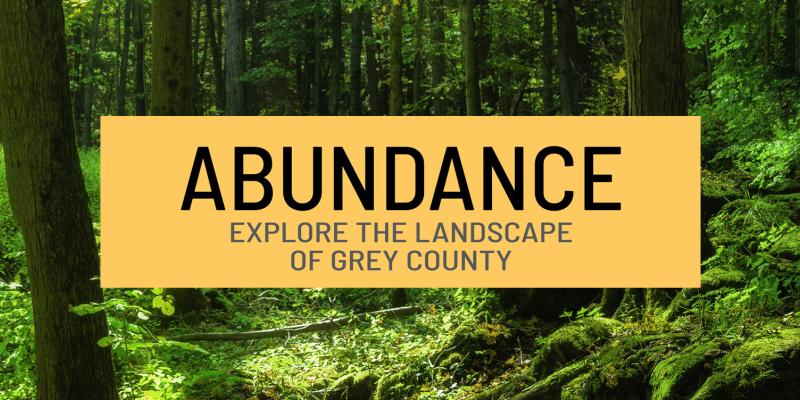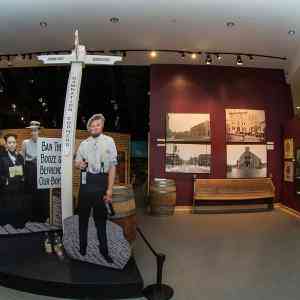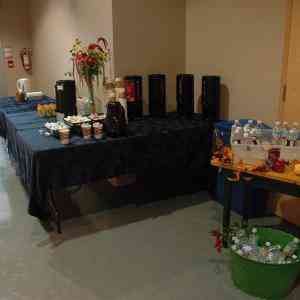Truth and Reconciliation Resources
As a Canadian museum, we hold the responsibility to present an honest account of our nation's past, even when that history is painful and unjust. We recognize that institutions like ours must continue working to ensure that this legacy is never forgotten.
At Grey Roots, we are taking steps along the path to Reconciliation.
- Representatives from Saugeen First Nation and the Chippewas of Nawash Unceded First Nation have formed an Indigenous Advisory Circle, guiding how we present Indigenous history and culture.
Miptoon (Anthony Chegahno) – Miptoon is an Elder, band councillor and band member with the Chippewas of Nawash.
Elder Shirley John – Strong White Buffalo Woman, Saugeen First Nation. Shirley is an Elder for Georgian College, Facing History and does Traditional Teachings, Opening Song and Prayer in many places throughout Grey-Bruce and beyond.
Jason W. Johnston – Jason is a band member of the Chippewas of Nawash, with fifteen years’ experience in tourism across Canada, specializing in Indigenous tourism.
Brittany Jones – Brittany is a band member of the Chippewas of Nawash and has worked for the Saugeen Ojibway Nation Environment Office. She is an accomplished bead work, leather, birch bark and quill artist.
Lenore Keeshig – Lenore is an Elder, author and traditional storyteller with the Chippewas of Nawash.
Jennifer Linklater – Jennifer is a band member of the Chippewas of Nawash, an Aboriginal Student Advisor at Georgian College and Apatisiwin Program Coordinator at M'wikwedong Indigenous Friendship Centre.
Robin Jones – Robin is a band member of the Chippewas of Nawash. She serves as a Reconciliation Consultant with NVision Insight Group.
- In 2023, we unveiled an art display at the entrance of our permanent gallery titled Saukiing Anishnaabekiing Presents Our Stories. The display evokes Anishinaabe creation stories while also exploring the treaty process in Grey County. The artwork, created by Nyle Miigizi Johnston—a painter, muralist, and storyteller from the Chippewas of Nawash Unceded First Nation—beautifully illustrates these themes.
- Launched in 2025, updates to the Grey County Gallery now present more First Nations perspectives on the history of the region, including a section focused on the Saugeen Ojibway Nation experience with the residential school system.
- Each summer, Grey Roots staff participate in interpretive hikes at Cape Croker Park, through the Anishinaabe Cultural Experiences program. These hikes have been valuable learning opportunities for our team. The knowledge and stories shared by Anishinaabe guides deepen our understanding of the rich, long-standing First Nations history in this area.
Grey Roots staff learning from Jason W. Johnston on an interpretive hike.
- We are eager to share resources that will foster greater understanding of Truth and Reconciliation and encourage meaningful conversations. These resources include a series of first-hand accounts from residential school survivors, which can be found below.
Content Warning: Many of the testimonies linked below contain stories which may be disturbing, particularly to survivors of residential schools and their descendants. If you are in need of support, please contact the Residential Schools Crisis Line at 1-866-925-4419.
Wes Fineday - Voices From Here
"I always tried to make it a point never to show signs of surrender. You can kill me, but I'm not going to cry."
Wes FineDay, Nehiyaw Knowledge Keeper, shares the oral history of his people and his personal history at, and escape from, residential school. Courtesy of Historica Canada.
Beverly Albrecht - Legacy of Hope
"I was seven, I was the oldest. My brother was six, my other sister was five. The other brother was four and my youngest sister was three."
Beverly Albrecht, one of five siblings taken to the Mohawk Institute, recounts the regimented daily life and strict discipline at the Institute. Courtesy of the Legacy of Hope Foundation.
Andre Carrier - Voices From Here
"I'm 61 years old and I'm only [now] dealing with the trauma of these realities that I lived throughout my whole life."
Andre Carrier describes his deeply traumatic experience at Roman Catholic day school. Warning: this account describes sexual violence against children. Courtesy of Historica Canada.
Mabel Grey - Legacy of Hope
"Finally I asked the Sister, 'Why? Why are we praying so much? and she said, 'To chase the devil out of you.' And we didn't even know what the devil was."
Mabel Grey describes her experience growing up at St. Bernard Mission in Alberta which she attended from age 3 to 18, beginning in 1924. Courtesy the Legacy of Hope Foundation.
The Saugeen Ojibway Nation is the collective name applied to the Chippewas of Nawash Unceded First Nation and the Chippewaas of Saugeen. Grey Roots Museum and Archives, the whole of Grey and Bruce counties, as well as much of Simcoe, Dufferin, Wellington, Perth and Huron counties fall within the traditional territory of the Saugeen Ojibway Nation (SON).
Territory Acknowledgement - Learn what a territory acknowledgment is and why it should be observed, and find appropriate acknowledgement text for use at gatherings within the territory of the SON.
Guide to the Saugeen Ojibway Nation - This excellent video introduces viewers to the history, language, and culture of the Saugeen Ojibway Nation.
The Legacy of Hope Foundation is an Indigenous led charitable organization who seek to create awareness and understanding of Canada's residential school system. Their work has created many invaluable resources which promote reconciliation through fostering empathy and understanding.
Where are the Children? - Here you'll find a comprehensive timeline of the residential school system as well as dozens of moving first hand survivor stories.
Reading lists and education guides - These resources are provided to facilitate the work of Reconciliation in the home and classroom. Find dozens of suggestions on the reading list designed for children of all ages as well of adults.
Find the entire Voices From Here series, produced by Historica Canada, right here.
The series features Indigenous peoples from across Canada telling their own stories in their own words. The series comes with an education guide designed for students, complete with sections for each video in the series. Click here for the education guide.
Ojibwe, or Anishinaabemowin, is an Indigenous language spoken by the original peoples of the Great Lakes region. The 2016 Census lists 28,130 Indigenous citizens in Canada who speak Ojibwe with conversational fluency.
The Ojibwe People's Dictionary is a searchable Ojibwe-English and English-Ojibwe dictionary. It includes audio of Ojibwe words spoken by Ojibwe elders, 17,000 word entries, expanded entries with spoken example sentences, photos and videos as well as language help and guides.
This comprehensive toolkit, created by the Assembly of First Nations, features 22 modules which offer information on topics ranging from the impacts of contact with European colonizers, to ending violence against First Nations women. They can be accessed through iTunes U, or downloaded as PDFs on non iOS devices.
In 2015, the Truth and Reconciliation Commission released its final six volume report. The reports are based on accounts from 6,500 witnesses, 5 million records from the Government of Canada, and 6 years work by the Commission. Find each volume in the report, including the Summary and Calls to Action, at the National Centre for Truth and Reconciliation.
Thank you to the the Saugeen Ojibway Nation, Legacy of Hope Foundation, Historica Canada, the Ojibwe People's Dictionary, the Indigenous Arts Collective of Canada, and the Assembly of First Nations for creating the resources shared on this page.















